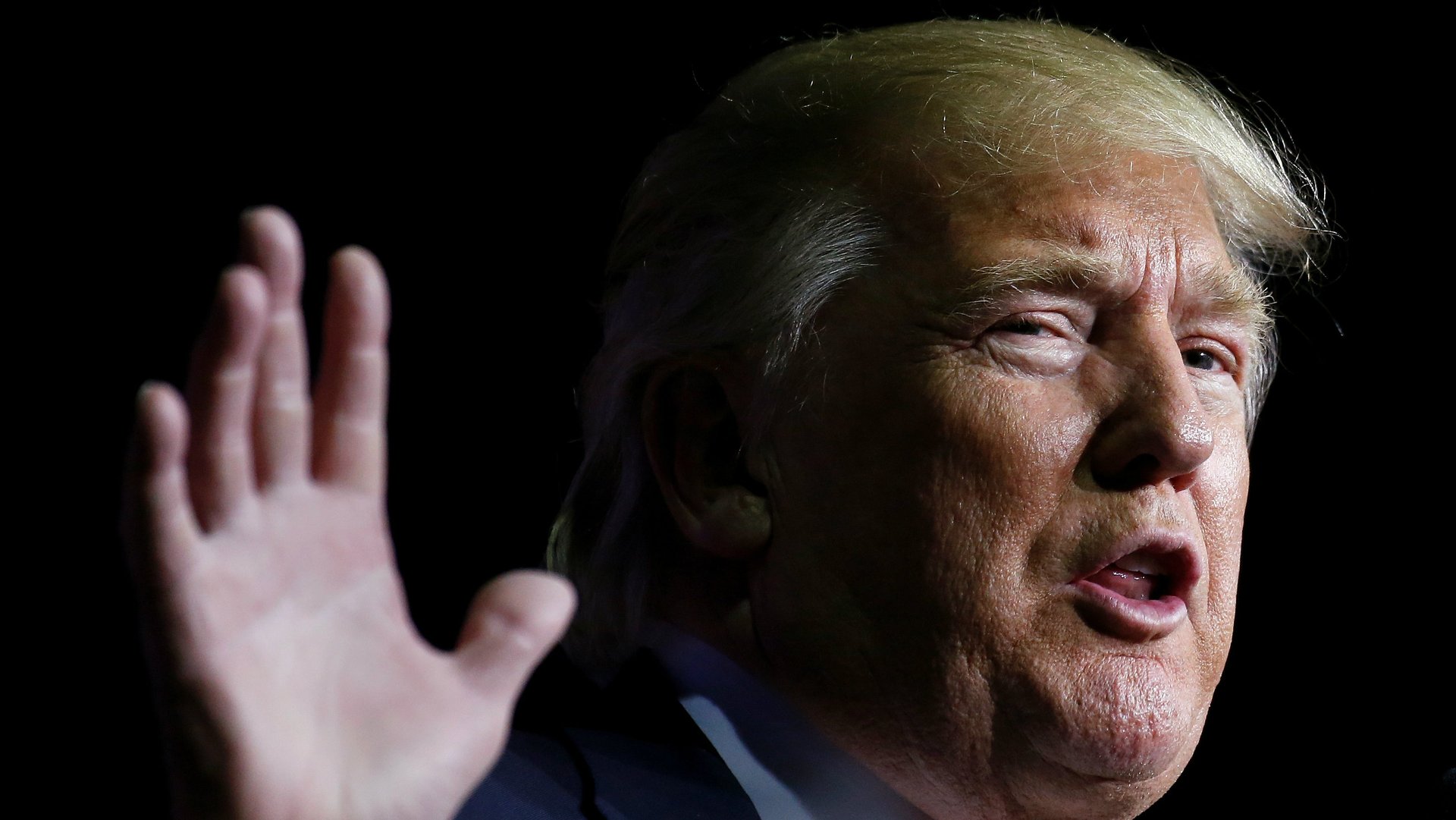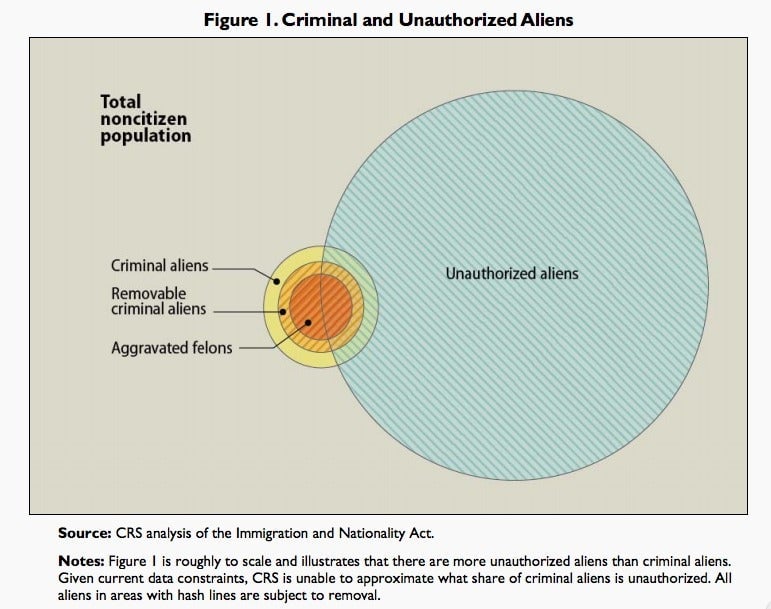The complete guide to Trump’s many immigration policy mistakes
Donald Trump has staked his candidacy on immigration policy. Yet his proposed solutions are as small-minded as they are disturbingly ill-informed. As the election clock counts down to Nov. 8, here’s a handy guide to understanding what is and isn’t accurate when it comes to Trump’s depiction of American immigration trends.


Donald Trump has staked his candidacy on immigration policy. Yet his proposed solutions are as small-minded as they are disturbingly ill-informed. As the election clock counts down to Nov. 8, here’s a handy guide to understanding what is and isn’t accurate when it comes to Trump’s depiction of American immigration trends.
Unauthorized immigrants = Mexicans
The boogeymen animating Trump’s campaign are, at best, sombrero-wearing, taco bowl-eating Mexicans. At worst, Mexicans are rapists and criminals. Trump’s frequent suggestion that unauthorized immigrants from Mexico are pouring over the border in droves is simply not true. In the last few years, more Mexican immigrants have been leaving the US than are coming in. As of 2014, the last year for which there was data available, Mexican unauthorized immigrants totaled 5.6 million, down from 6.4 million in 2009, according to Pew Research Center.
This pattern is also evident in data on border arrests, a proxy for unauthorized immigration, as we explain in more detail here.
A big net increase in unauthorized immigrants has come from central American children and families fleeing what’s essentially a humanitarian crisis of crime and drought. Many are seeking asylum (pdf, p.12).
Overall, since peaking in 2007 at 4% of the US population, the population share of unauthorized immigrants has remained near 3.5% for the last five years, according to Pew.
Oh, and that 30 million figure Trump has been citing? Also wrong. Estimates by the federal government and a slew of independent research outfits put the number of unauthorized immigrants between 11 million and 12 million.
Crime
Trump’s whole case for the presidency arguably rests on a mostly bogus upsurge in crime, much of which he pins on 2 million ”criminal aliens now inside our country”—that is, immigrants who have been allowed to stay in the country by an incompetent Obama administration. Both Obama and Hillary Clinton ”support the release of dangerous criminals from detention,” he says.
Do some quick math and it sounds like nearly two in every five unauthorized immigrants is a criminal roaming the streets. But that image doesn’t square with the facts.
Trump is apparently capitalizing on the government’s vague but scary term “removable criminal aliens.” This term has no legal definition and includes both authorized and unauthorized immigrants who have been charged with a crime, as this Congressional Research Service report explains (pdf, p.3). The figure Trump cites probably refers to an estimate derived from government projections of the overall non-citizen population, and the federal bureau of prisons estimate of the prevalence of non-citizens in prison.
And the relevant criminal offenses are also pretty broad, ranging from murder to turnstile-hopping and traffic violations—or reentering the US illegally after having been deported. A study by the Migration Policy Institute (pdf, p.24) estimates that around 300,000 unauthorized immigrants had been convicted of felonies, and 390,000 of serious misdemeanors.

To hear Trump tell it, the Obama administration is permitting dangerous immigrants to roam free. However, the reality is quite different. Obama’s deportation efforts are seen as so harsh that some metropolitan governments are becoming “sanctuary cities,” where local law enforcement officials decline to report unauthorized immigrants to federal officials. This is because detaining unauthorized immigrants puts an extra strain on local law enforcement and also discourages immigrants from reporting crimes or cooperating with police for fear of deportation.
Terrorism
Trump also frequently ties immigrants to terrorism, claiming that federal authorities unwittingly grant terrorists visas, or that terrorists find ways to enter the US illegally. During his Phoenix speech on Aug. 31, Trump said that between 9/11 and 2014, 380 immigrants were “convicted in terror cases” inside the US, citing the Senate’s immigration subcommittee.
That sounds terrifying, as if 380 immigrants were caught planning to bomb America.
A closer look at the report Trump was talking about (pdf) suggests fear, rather than fact, is the main motivator here. The document can be found on the site of Jeff Sessions, the elfin Alabama senator who counts thwarting immigration reform and Donald J. Trump as his biggest passions. In total, there were 580 “terrorist or terrorism-related” convictions between 9/11 and 2014, including both non-citizen convictions and some 200 convictions of US citizens. The thing is, the term “terror cases” sounds more alarming than the truth. Many of these charges are for “terrorism-related” crimes like forging documents or pretending to be a citizen when you’re not. More than one in 10 of these cases were so unthreatening they the perpetrators were given probation instead of jail time. Scores of others earned less than a year in prison.
Jobs & wages
Trump says curbing immigration will increase jobs for Americans and boost wages. As we’ve argued before, immigrants don’t typically take US citizens’ jobs. The foreign-born share of the American workforce and the total number of jobs tend to rise in tandem.
However, immigration does threaten some jobs. While the overwhelming majority of US-born workers do not compete with immigrants in the workforce, the least-educated workers sometimes do, as economist Jared Bernstein explains. But Bernstein also notes that this doesn’t mean we should stop letting immigrants in. Rather, it shows we need to improve educational opportunities and upgraded worker training programs. For the same reasons, immigrants don’t generally push down wages of native workers. The exception, again, is in low-skilled labor.
That said, the offshoring of jobs to countries with lower wages is a vastly bigger threat to those low-skilled workre than immigrants, as we’ve discussed in more detail before.
Trump’s solution is to kick every one of the 11 million unauthorized immigrants out. That might help certain low-wage sectors—like, say, construction. But deporting everyone would also cut the labor supply for sectors that rely almost exclusively on low-skilled immigrants, such as agriculture.
Arizona illustrates how Trump’s plan throws the baby out with the bathwater. Many Mexican immigrants returned home for good after the great recession hit in 2008, driven by both a stagnant job market and a militant deportation campaign led by local law officers. Between 2010 and 2014, wages on Arizona’s farms and construction sites rose, as the Wall Street Journal reports (paywall). However, the flight of Mexican immigrants also left many businesses without enough labor to function. Plus, the exodus drove down overall demand because it dramatically shrank Arizona’s consumer base. As a result, the number of overall job openings has actually decreased.
Trump also equates ”amnesty” with ”low wages.” However, creating a way for unauthorized immigrants to become citizens would, if anything, boost the wages of low-skilled workers—without shrinking the economy in the process. Due to fears of deportation, unauthorized immigrants can’t report employer abuses to the authorities or otherwise protect themselves from exploitation. This in turn cheapens their labor, dragging down the wages of domestic workers against whom they compete. Trump argues that such a pathway to citizenship will encourage more unauthorized immigration. Were this indeed true, you’d think the number of unauthorized immigrants would have risen in the last few years, particularly in 2013, when comprehensive immigration reform was mooted in Congress. It hasn’t.
In fairness, Trump is rarely out-and-out wrong when it comes to immigration. But more often than not, he has lopped off so much context that neither is he right. One of the things he’s not mistaken about, however, is that many Americans agree with him.
Ultimately, Trump’s scary stories make it that much easier for his fans to ignore the fact that the vast majority of violent criminals are as American as they are. That the authorities are mostly combating terrorism effectively. That many workers are failing to learn enough to grow with the US economy. Or that the biggest things keeping America from being great come from within.